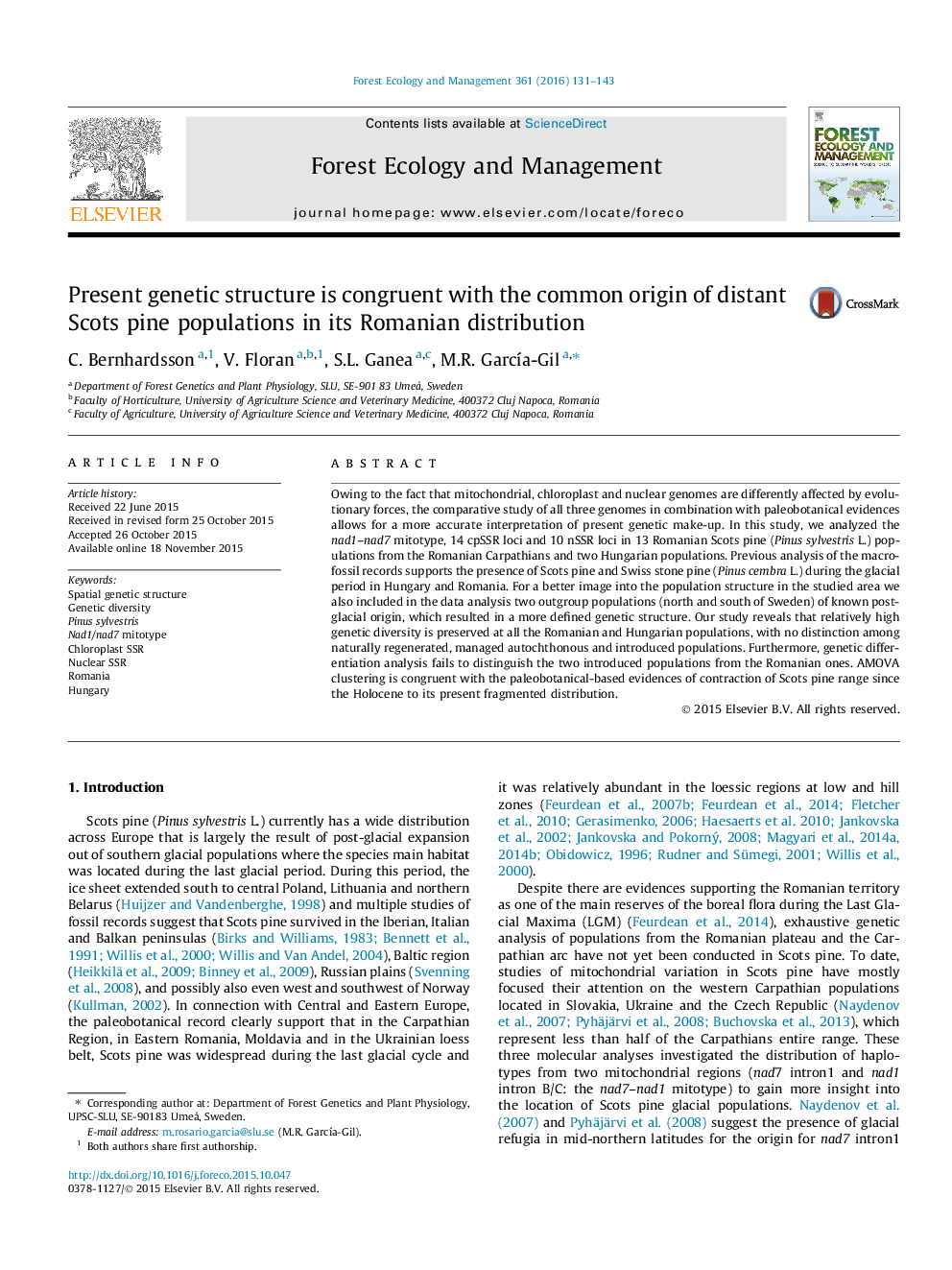| کد مقاله | کد نشریه | سال انتشار | مقاله انگلیسی | نسخه تمام متن |
|---|---|---|---|---|
| 6542434 | 159160 | 2016 | 13 صفحه PDF | دانلود رایگان |
عنوان انگلیسی مقاله ISI
Present genetic structure is congruent with the common origin of distant Scots pine populations in its Romanian distribution
ترجمه فارسی عنوان
ساختار ژنتیکی فعلی با منشاء مشترک توده های کاج دور افتاده اسکات در توزیع رومانیایی آن سازگار است
دانلود مقاله + سفارش ترجمه
دانلود مقاله ISI انگلیسی
رایگان برای ایرانیان
کلمات کلیدی
موضوعات مرتبط
علوم زیستی و بیوفناوری
علوم کشاورزی و بیولوژیک
بوم شناسی، تکامل، رفتار و سامانه شناسی
چکیده انگلیسی
Owing to the fact that mitochondrial, chloroplast and nuclear genomes are differently affected by evolutionary forces, the comparative study of all three genomes in combination with paleobotanical evidences allows for a more accurate interpretation of present genetic make-up. In this study, we analyzed the nad1-nad7 mitotype, 14 cpSSR loci and 10 nSSR loci in 13 Romanian Scots pine (Pinus sylvestris L.) populations from the Romanian Carpathians and two Hungarian populations. Previous analysis of the macrofossil records supports the presence of Scots pine and Swiss stone pine (Pinus cembra L.) during the glacial period in Hungary and Romania. For a better image into the population structure in the studied area we also included in the data analysis two outgroup populations (north and south of Sweden) of known post-glacial origin, which resulted in a more defined genetic structure. Our study reveals that relatively high genetic diversity is preserved at all the Romanian and Hungarian populations, with no distinction among naturally regenerated, managed autochthonous and introduced populations. Furthermore, genetic differentiation analysis fails to distinguish the two introduced populations from the Romanian ones. AMOVA clustering is congruent with the paleobotanical-based evidences of contraction of Scots pine range since the Holocene to its present fragmented distribution.
ناشر
Database: Elsevier - ScienceDirect (ساینس دایرکت)
Journal: Forest Ecology and Management - Volume 361, 1 February 2016, Pages 131-143
Journal: Forest Ecology and Management - Volume 361, 1 February 2016, Pages 131-143
نویسندگان
C. Bernhardsson, V. Floran, S.L. Ganea, M.R. GarcÃa-Gil,
